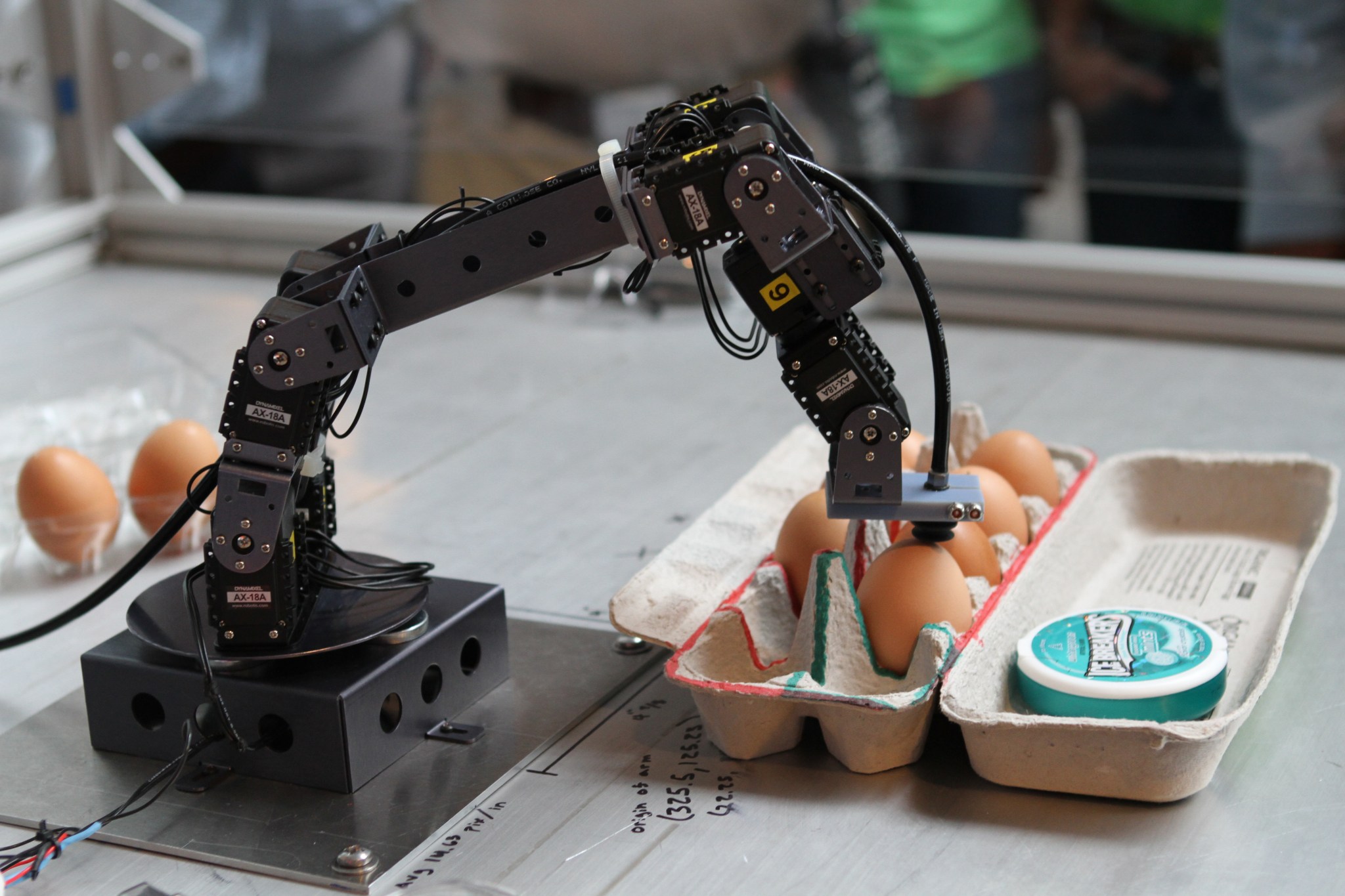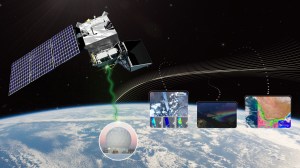The Innovation Lab consists of 17 interns this summer working on four different projects, including the main robotic arm group.
A crowd of onlookers gathers around a metal box with a clear plastic shield surrounding it. Inside are two egg cartons: one with eggs, one without. Also inside are two monitors, a keyboard and mouse, and an Xbox Kinect camera. All of this is for the main attraction inside the protective case–a robotic arm with a small suction tip on the end.
As one person clicks on a skeleton-like outline of the arm on the computer, the real arm comes to life, moving toward the case full of eggs. As the arm is carefully maneuvered over the eggs, another person presses a button, turning on a vacuum, which then grasps an egg and carefully brings it toward the empty carton. The person releases the suction once the egg reaches the carton, and the process repeats.
The display began with a robotic arm kit and a group of interns at the Innovation Lab at NASA’s Goddard Space Flight Center in Greenbelt, Md. The Innovation Lab consists of 17 interns this summer working on four different projects, including the main robotic arm group. The main group worked on an arm with the ultimate goal of it being able to recognize an egg using a camera, pick it up and move it. Three college interns led the project, with five high school interns also playing important roles.

The group dynamic was one of the main goals of the project when Innovation Lab mentor Matt Showalter founded the program.
“In the short 10 weeks they have to produce this project, they’re learning how to take a team that never met anybody before and bond themselves into a cohesive unit to be able to produce this project,” Showalter said.
The teamwork is one aspect that the interns have embraced, especially as they tried to make their vision come to life.
“Matt gave us a kit and a robotic arm, and that’s about all we got, so we had to figure out what we wanted it to do,” said college intern Lauren Scolese. “Now, we’ve got an electrical guy, we’ve got a lot of mechanical guys, we’ve got some computer guys, which I didn’t think about how important those guys are.”
One of those “computer guys” is high school intern Rohan Punnoose. Punnoose did a lot of the programming, which helped to get the arm moving and on its way towards autonomous operations.
“It’s cool seeing other people’s work progress along with yours and being able to combine them and have a finished product,” Punnoose said.
Some of those parts, however, don’t come from the main group. Many of the interns from the other three projects in the Innovation Lab helped with the main arm, Showalter said.
One of the other projects was a group that created a 3-D-printed spacecraft piece, which was flown on a sounding rocket out of NASA’s Wallops Flight Facility in Wallops Island, Va. Those who worked on the project were able to use their 3-D printing skills to help the main group.
If a part was needed, intern Brian Kubitschek said he would go to the Innovation Lab and help design and print a new gripper or gear.
Although the goal was to move an egg, the Innovation Lab has a more long-term goal for both the program and the interns once they go back to school.
“What we’ve done will be continued next year and years after and hopefully be really productive, useful and cool,” Punnoose said.
“Our ultimate goal is to put this robotic arm onto a mobile platform with the potential for artificial intelligence,” Showalter said. “We have a vision of accomplishing this, and that’s why we’re looking at innovation. Always look upward and onward.”
The Innovation Lab is in its sixth year. Some of the other projects the different intern groups are working on include more research on 3-D-printed rocket parts and creating computerized tools to help make manufacturing easier.
By Sawyer Rosenstein
NASA’s Goddard Space Flight Center, Greenbelt, Md.


























